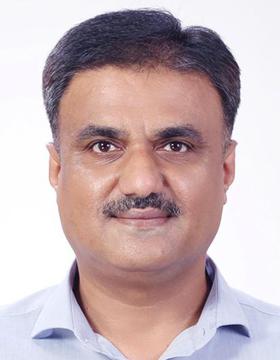2nd International Workshop on Network Softwarization Techniques for IoT Applications
Website: SoftIoT 2021
Friday, July 2, 2021
Opening
9:00am – 9:10am JST
Session Chair: Haotong Cao, The Hong Kong Polytechnic University, Hong Kong SAR, China
Keynote 1
9:10am – 10:10am JST
Session Chair: Haotong Cao, The Hong Kong Polytechnic University, Hong Kong SAR, China
Role of Future Internet Architecture in Vehicular Networks
Safdar Hussain Bouk, DGIST, Korea
Description
Vehicular networks are today’s reality. The network is important to realize many applications that are enabling elements of a smart city. A typical vehicular network comprises of the onboard units (OBUs) interfaced with the vehicle electronics, road-side units (RSUs), smart road signs, adaptive traffic lights, and so forth. All network elements are ubiquitously connected with each other through several networking technologies, including but not limited to, DSRC/WAVE, LTE, WiFi, etc. The content communication among all vehicular network elements is a challenging task due to its peculiar characteristics encompassing intermittent connectivity, short link duration, unpredictable link quality, and very fast mobility. Additionally, all the conventional content communication technologies establish and secure the channel and assume that it will stop the spam content, which is not the case. Also, there is not yet any standard to efficiently support quality service access in presence of the fast mobility. As a result, the guaranteed and secure content communication with mobility support in vehicular networks is a challenging task. In order to address these challenges, the future Internet architectures have been proposed, which includes the Named Data Networking (NDN), Content Centric Networking (CCN), MobilityFirst, and so forth. In this presentation, we will take a closer look on how does the NDN help to meet the content demand of the future vehicular applications.
Biography

Safdar Hussain Bouk (Senior Member, IEEE) received the B.E. degree in computer systems from the Mehran University of Engineering and Technology, Jamshoro, Pakistan, in 2001, and the M.S. and Ph.D. degrees in engineering from the Department of Information and Computer Science, Keio University, Yokohama, Japan, in 2007 and 2010, respectively. He was an Assistant Professor with the Department of Electrical Engineering, COMSATS Institute of Information Technology, Islamabad, Pakistan, from 2010 to 2016. He was a Postdoctoral Fellow with Kyungpook National University, Daegu, South Korea, from 2014 to 2016. He is currently a Research Professor with the Department of Information and Communication Engineering, Daegu Gyeongbuk Institute of Science and Technology (DGIST), Daegu. His research interests include wireless ad hoc sensor networks, underwater sensor networks, vehicular networks, information-centric networks, and cyber physical systems.
Keynote 2
10:30am – 11:30am JST
Session Chair: Haotong Cao, The Hong Kong Polytechnic University, Hong Kong SAR, China
5GB e-Health Networks and Related Services, from Theory to Reality
Di Zhang, Zhengzhou University, China
Description
Information and communication technology (ICT) for health has been widely discussed. However, due to the limited number of connected devices, slow transmission speed, low communication reliability and higher latency drawbacks of prior cellular communications generations, e-health was not widely adopted. The ongoing development of 5G is accelerating the practical use of e-health networks and related services. Stunning 5G envisions are the ultra-reliable low latency communications (URLLC), enhanced mobile broadband (eMMB) and massive machine type communications (mMTC), which fit the requirements of e-health networks and related services perfectly. However, due to the technology limitations of 5G’s current version, more endeavors are still needed, especially for the URLLC. Besides the technical limitations, ethics and privacy information protection are also challenging the deployments of 5G and beyond technologies (5GB) e-health networks and related services. Motivated by the above, in this tutorial, we cover the related technology solutions, user cases, future research trends and challenges for the 5GB e-health networks and related services. Ultimately, the intent of this tutorial is to provide an in-depth exposition of 5GB research and to serve as a basis for stimulating more out-of-the-box research about the 5GB e-health networks and services.
Biography

Di Zhang currently is an Assistant Professor at Zhengzhou University, Zhengzhou 450001, China (2017-now) and an Adjunct Researcher of Waseda University, Tokyo 169-8555, Japan (2017-now). He was a Postdoctoral Senior Researcher of Seoul National University, Seoul, South Korea (2017-2018), and a visiting student of National Chung Hsing University, Taichung, Taiwan (2012). Dr. Zhang has participated in two international projects in wireless communications and networking co-funded by the EU FP-7, EU Horizon 2020, Japanese Monbushou and NICT. He is serving as area editor of KSII Transactions on Internet and Information Systems, editor of the IEEE ACCESS, IET Quantum Communication, Journal of Circuits Systems and Computers. He has served as guest editor of the IEEE Wireless Communications, the IEEE NETWORK, IEICE Transactions on Internet and Information Systems; Chair of IEEE WCNC 2020, IEEE/CIC ICCC 2020, IEEE/CIC ICCC 2019. In 2019, he received the ITU Young Author Award and the IEEE Outstanding Leadership Award. His research interests include wireless communications, signal processing, Internet of things and their applications.
Technical Session 1
1:30pm – 2:30pm JST
Session Chair: Yue Hu, China Mobile Communications Group Jiangsu Co., Ltd., China
Survivable Service Function Chain Mapping in NFV-Enabled 5G Networks
Yue Hu, China Mobile Communications Group Jiangsu Co., Ltd, China
Yongan Guo, Nanjing University of Posts and Telecommunications, China
Optimization of Multipath Transmission Path Scheduling Based on Forward Delay in Vehicle Heterogeneous Networks
Zhe Han, Nanjing University of Posts and Telecommunications, China
Bin Wang, Hangzhou Hikvision Digital Technology Co., Ltd, China
Hai-tao Zhao, Nanjing University of Posts and Telecommunications, China
Yue Chen, Nanjing University of Posts and Telecommunications, China
Service Function Chaining in Wildfire Scenarios
Bruno Miguel Sousa, University of Coimbra, Portugal
Henrique M Simões Silva, University of Coimbra, Portugal
Noé Godinho, University of Coimbra, Portugal
Marilia Curado, University of Coimbra, Portugal
Technical Session 2
3:00pm – 4:00pm JST
Session Chair: Yongan Guo, Nanjing University of Posts and Telecommunications, China
A Translator as Virtual Network Function for Network Level Interoperability of Different IoT Technologies
Sisay Tadesse Arzo, Via Della Malpensada 140, Italy & ICT Doctral School, University of Trento, USA
Francesco Zambotto, University of Trento, Italy
Fabrizio Granelli, University of Trento, Italy
Riccardo Bassoli, Technische Universität Dresden, Germany
Michael Devetsikiotis, University of New Mexico, USA
Frank H.P. Fitzek, Technische Universität Dresden & ComNets – Communication Networks Group, Germany
Security Technologies in Ad-hoc Networks: A Survey
Yaohui Zhong, Nanjing University of Posts and Telecommunications, China
Yongan Guo, Nanjing University of Posts and Telecommunications, China
Task Distribution Offloading Algorithm Based on DQN for Sustainable Vehicle Edge Network
Tianyi Feng, Nanjing University of Posts and Telecommunications, China
Bin Wang, Hangzhou Hikvision Digital Technology Co., Ltd, China
Hai-tao Zhao, Nanjing University of Posts and Telecommunications, China
Tangwei Zhang, Nanjing University of Posts and Telecommunications, China
Jiawen Tang, Nanjing University of Posts and Telecommunications, China
Zhenkun Wang, Nanjing University of Posts and Telecommunications, China
Closing Session
4:00pm – 4:10pm JST
Session Chair: Haotong Cao, The Hong Kong Polytechnic University, Hong Kong SAR, China











